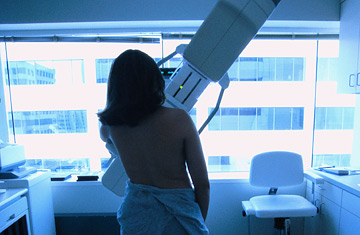
(2 of 4)
Judging from the reaction to the new breast-cancer recommendations, that is proving to be a difficult reality for Americans to accept. But the task force's mammography advice probably marks the leading edge of similar recommendations to come. Already, new guidelines on Pap smear screening for cervical cancer have delayed the age at which young women should begin regular testing and reduced the frequency of testing in older women. Doctors are also questioning the usefulness of prostate-cancer screening among otherwise healthy middle-aged men, as studies begin to show that the test, which has many risks, may not necessarily lead to fewer deaths from the usually slow-growing cancer. The Senate health reform bill currently being debated would also rely on the task-force guidelines to determine what preventive medical services private insurers would be required to cover at no cost to patients. In a sign of how contentious evidence-based approaches may become, Secretary of Health and Human Services (HHS) Kathleen Sebelius quickly distanced the Obama Administration from the new mammography advice. She said in a statement, "Our policies remain unchanged," and cast doubt on whether private insurance--required by most states to cover routine mammograms beginning at 40--would be affected. "Keep doing what you're doing," Sebelius advised women.
Gail Wilensky, a former high-level HHS official under George W. Bush, called the Obama Administration's response "appalling and outrageous and a very good reminder of how hard it is going to be to move to evidence-based medicine whenever it goes against a sacred cow."
The Limits of Screening
A decade ago, doctors saw breast cancer as a monolithic disease that always progressed the same way, beginning with a single mutant cell that continued to divide and spread to the rest of the body. At the time, screening all women made sense, especially since annual mammograms had reduced deaths from breast cancer 3% each year since 1990. But as Dr. Russell Harris, a professor of medicine at the University of North Carolina at Chapel Hill and a member of the task force, points out, breast cancer occurs less frequently in younger women, and not every cancer is the same. Some tumors are indolent and slow-growing; others are aggressively malignant and blanket a body within months. Mammography is best at spotting the slowest-growing tumors, which are most common and generally do not spread beyond the breast or require treatment. Although these tumors are malignant, they rarely go on to cause clinical symptoms. But when detected, they are still treated as if they were potentially faster-growing--with a combination of chemotherapy, radiation, surgery and hormone therapy. "We can't figure out which is which," says Harris. "So we end up having to treat them all."
